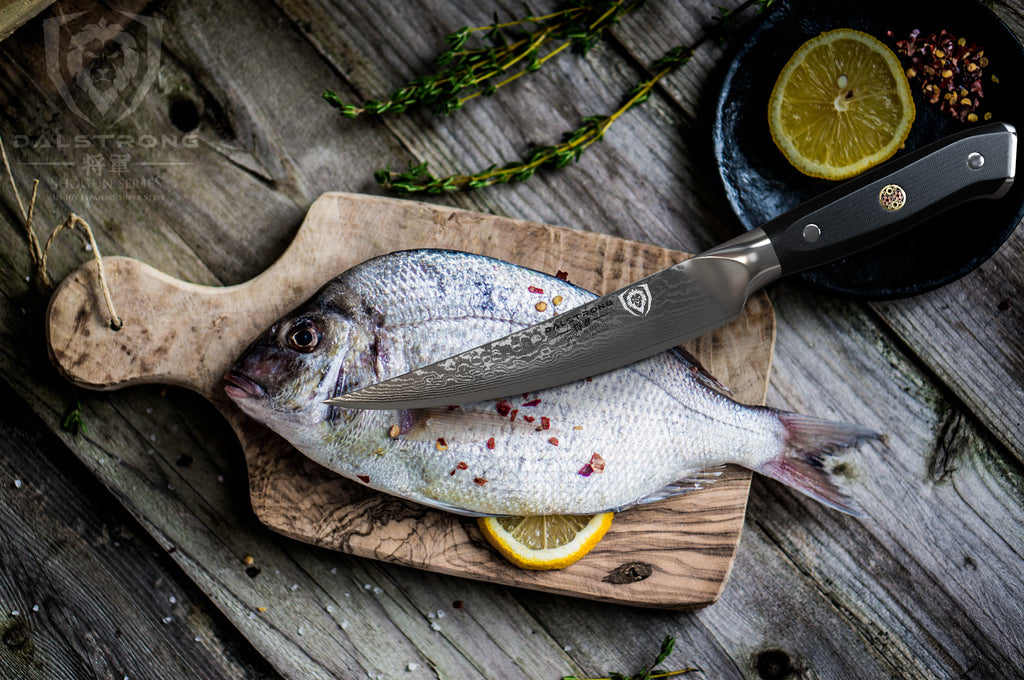In the world of culinary arts, having a sharp fillet knife is essential for efficient and precise cutting. This is especially true for those who are passionate about preparing fish. A dull knife can be not only frustrating to use but also dangerous. That’s why it’s important to know how to sharpen a Rapala fillet knife correctly. Whether you’re a kitchen hobbyist or a professional chef, you’ll find these techniques effective and easy to follow.

The Importance of a Sharp Fillet Knife
A sharp fillet knife is crucial for several reasons. First, it allows for cleaner and smoother cuts, which is essential for maintaining the integrity of the fish fillet. Second, a sharp knife reduces the risk of injury. With a dull knife, you need to apply more pressure, increasing the likelihood of slipping and causing an accident. Therefore, knowing how to properly sharpen your Rapala fillet knife is a skill every kitchen enthusiast should master.

Tools Needed
Before we dive into the sharpening process, let’s first discuss the tools you’ll need:
- Sharpening Stone: A coarse and fine grit stone will be needed.
- Honing Rod: This helps to realign the edge of your knife.
- Knife Sharpening Guide: Optional but useful for maintaining the correct angle.

Step-by-Step Guide
Preparing Your Work Area
Start by setting up a clean, well-lit workspace. Ensure you have all your tools within reach. Having a non-slip mat under your sharpening stone can add stability and safety to your sharpening process.
Soaking the Sharpening Stone
Most sharpening stones, especially water stones, need to be soaked before use. Submerge your stone in water until bubbles stop rising to the surface, which usually takes about 10-15 minutes.
Sharpening Angle
Maintaining the correct angle (usually around 15-20 degrees) is crucial for effectively sharpening your knife. You can use a knife sharpening guide if you’re new to this process.
Sharpening Technique
Start with the coarse side of the stone. Hold the knife at the correct angle and draw it across the stone, starting from the heel and moving to the tip. Repeat this process until you feel a burr (a rough edge) forming on the opposite side. Then switch to the fine grit stone and repeat the process to polish and refine the edge.
Honing the Knife
After sharpening, use a honing rod to realign the edge of your knife. Hold the rod vertically and draw the knife down from the base to the tip, maintaining a consistent angle.

Maintaining Your Sharpened Knife
Once your Rapala fillet knife is sharpened, it’s important to maintain its edge. Regular honing and proper storage can extend the life of your knife’s sharpness.
Regular Honing
Honing your knife regularly can help maintain its sharp edge. Aim to hone your knife before each use.
Proper Storage
Store your knife in a knife block or on a magnetic strip to protect the edge from damage.
Common Mistakes to Avoid
Avoid these common mistakes to ensure your knife remains in top condition:
- Using the wrong angle
- Not soaking the stone properly
- Applying too much pressure
- Neglecting regular maintenance
FAQs
How often should I sharpen my Rapala fillet knife?
It depends on usage, but generally, every few months or when you notice the knife becoming dull.
Can I use an electric sharpener?
While you can, it’s recommended to use a sharpening stone for better control and precision.
What’s the difference between honing and sharpening?
Sharpening removes material to create a new edge, while honing realigns the existing edge without removing material.
For more detailed guides on other types of knives, you can visit this link.
For further reading on kitchen knife maintenance, you can click here for in-depth information.
As an Amazon Associate, I earn from qualifying purchases.

